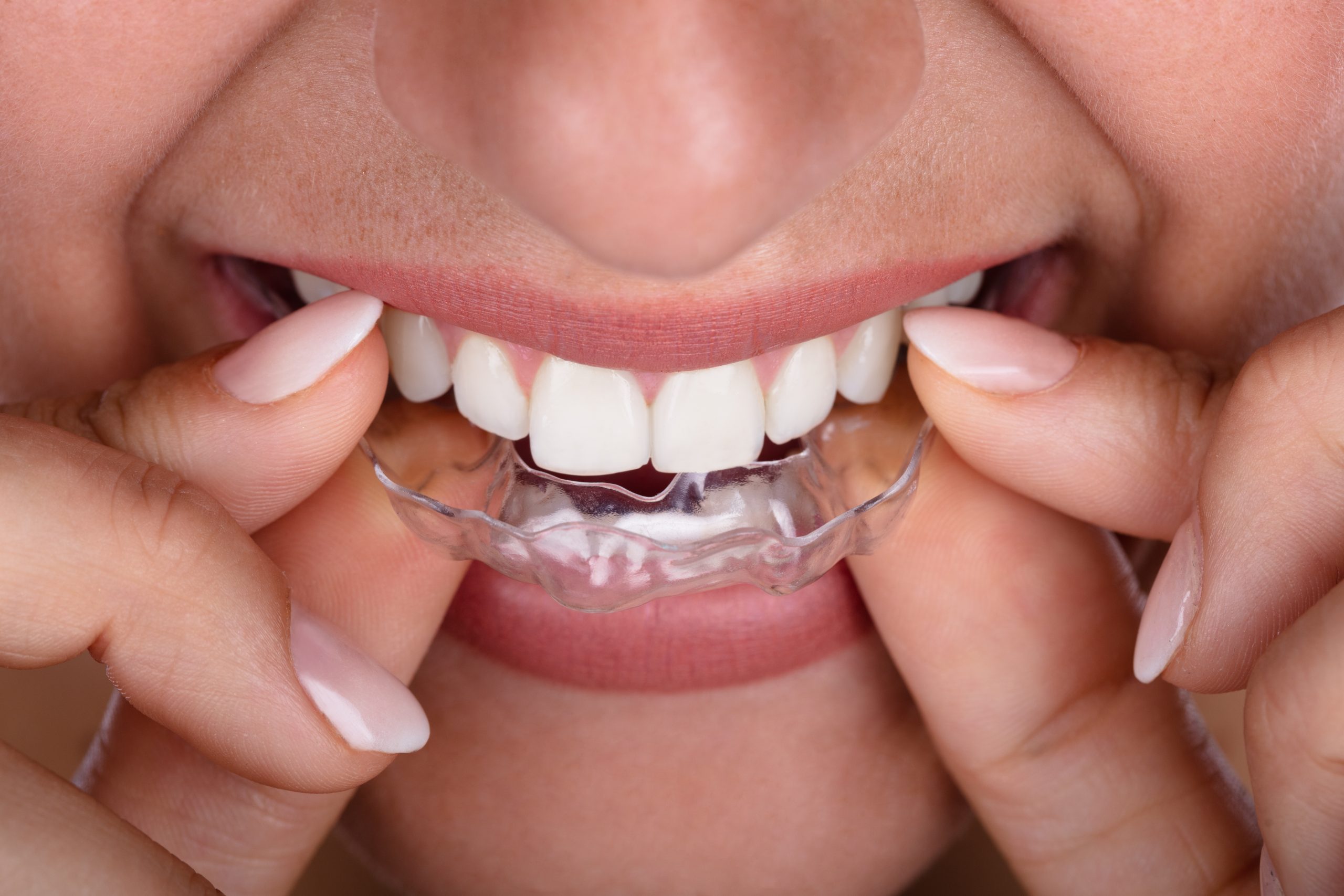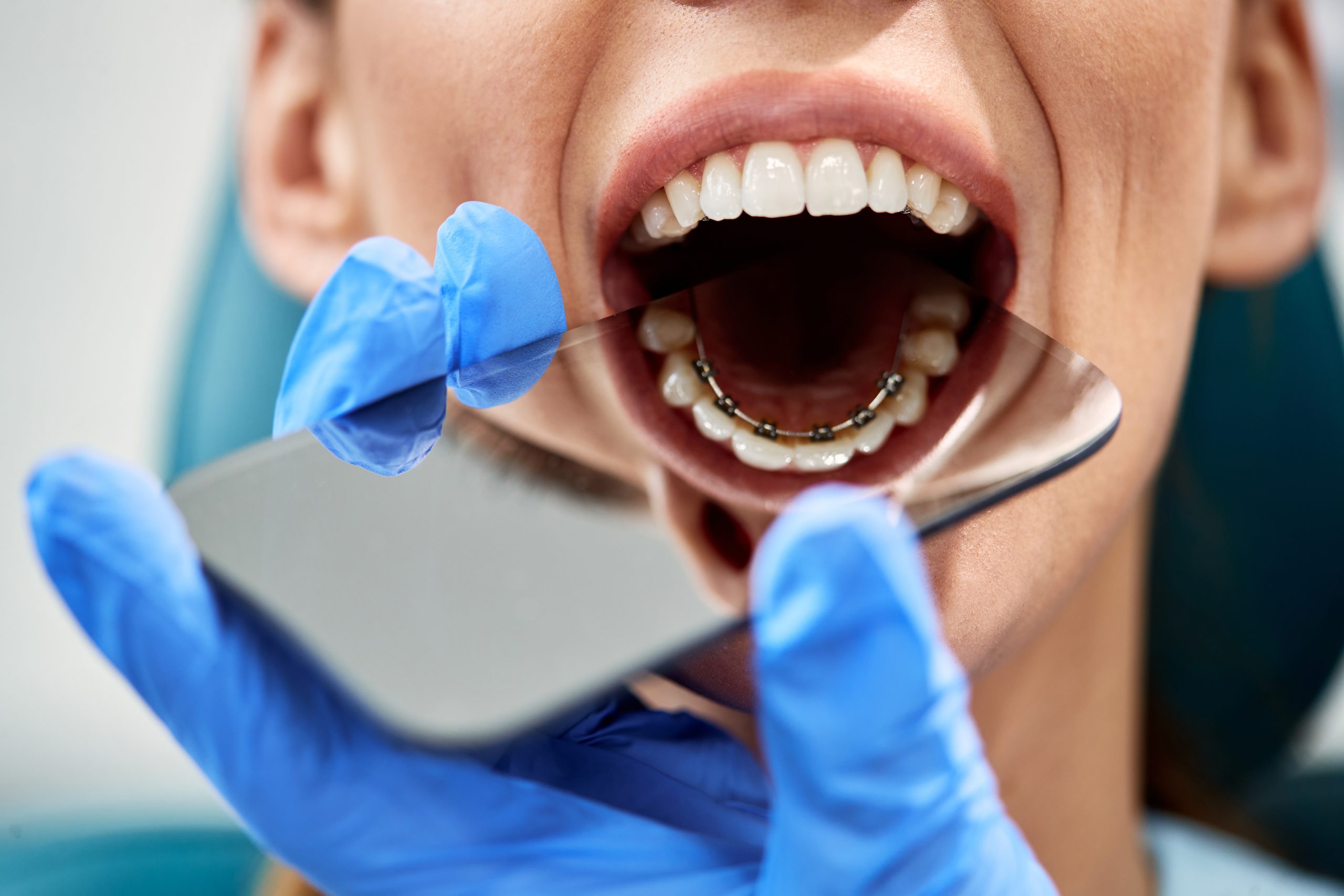Comparison of invisible orthodontic appliance with conventional braces



By the term “invisible” orthodontic appliances or braces, we refer to all orthodontic systems that are less noticeable or completely unseen, unlike conventional metallic braces, which are clearly visible. These may include:
- clear external braces (plastic or ceramic)
- lingual (internal) braces, placed on the inner surface of the teeth
- and clear aligners.
Below, we outline the advantages and disadvantages of each method.
We are Open Tue-Wed-Fri, 16.00-21.00 but by appointment only.
Call us at +30 210 7253133,
f+30 210 7253143
or mail us at
info[at]DrKonstantinosKontos.gr




Fixed Clear Braces
These are bonded to the outer surfaces of the upper and lower teeth and are made from PLASTIC or, preferably, CERAMIC materials. This material gives the appliances a white color very close to that of the teeth or even makes them TRANSPARENT. The advantage of these orthodontic appliances is that they retain almost all the properties of conventional braces while being more aesthetic and discreet. However, they are not completely invisible since the wire that connects them is usually metallic and therefore visible. New material technologies have not yet been able to produce reliable ceramic or plastic wires that can be used throughout the entire orthodontic treatment while maintaining consistent and dependable results. Their greatest advantage compared to the following methods is the significantly lower treatment cost.
Lingual (Internal) Braces
These are brackets bonded to the inner (lingual) surfaces of the teeth, making them completely invisible. They are the most suitable appliances for patients seeking truly invisible orthodontic treatment. The treatment plan designed by the orthodontist can be implemented without compromise; however, this method is technically much more challenging and requires greater experience and training from the orthodontist. Additionally, the cost of treatment is often significantly higher due to the materials and manufacturing processes of these brackets, as well as the technical complexity involved. Treatment duration may also be longer compared to conventional external appliances.
Lingual braces can be placed on both upper and lower teeth. In this case, the functional space of the tongue is significantly reduced, meaning that the patient requires more time to adjust in terms of speech (articulation) and hygiene (cleaning/brushing) of the appliances. An intermediate option is the placement of lingual brackets on the upper teeth in conjunction with conventional (external) brackets on the lower ones.
Clear Aligners
This is an orthodontic treatment based on a different philosophy aimed at straightening crowded and misaligned teeth. According to this method, tooth movement and the orthodontic correction are achieved using specialized plastic aligners made of multilayered thermoplastic material. These successive aligners are removable, typically worn for one to two weeks each, after which the patient progresses to the next aligner, and so on. Depending on the treatment plan, the aligners are placed on both the upper and lower jaws, and less commonly, on only one of the two. Their primary goal is patient comfort and treatment flexibility. The main advantage of clear aligners is their aesthetic appeal, as they are almost invisible – though not entirely – and the ease of maintaining oral hygiene, thanks to their removability.